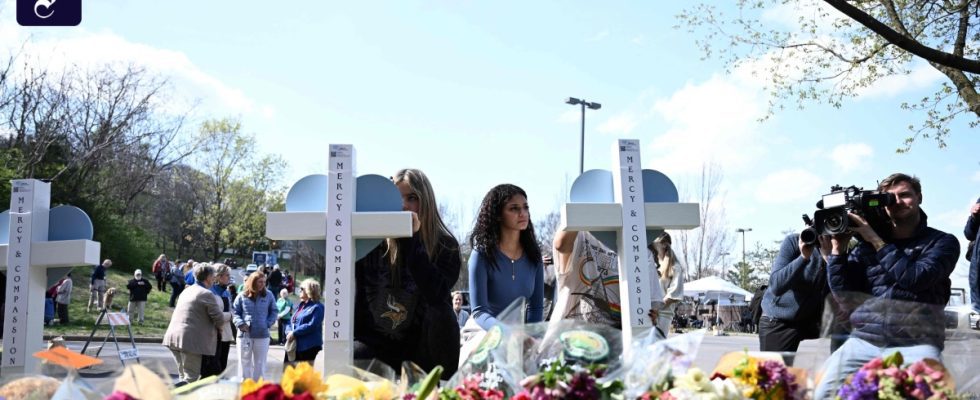WWHILE the American media indulges in horribly routine coverage of the recent shooting spree at an American school, this time in Nashville, Tennessee that left six dead, the Washington Post publishes several harrowing graphs of the effects of automatic guns in its online edition.
An interactive 3D rendering shows the devastation caused by a bullet from an AR-15 semi-automatic assault rifle in human tissue. For a long time, the press has been discussing whether pictures of victims and their wounds could lead to a change in awareness and a ban at least on automatic weapons. The Washington Post takes a step in that direction.
“How ammo from an AR-15 shreds a body”
The sheet shows the gunshot wounds suffered by two victims of school shootings: six-year-old Noah Pozner, who was killed by three bullets in the 2012 Sandy Hook school shooting and died, and 15-year-old Peter Wong, who died in the Marjorie Stoneman Douglas High School of Parkland was the victim of a gunman in 2018 – with thirteen gunshot wounds. “This shows ammunition from an AR-15 shredding a body,” reads the story, which carries the cautionary note, “These images may disturb some people.”
That should be for sure. Although the “Post” works with figures that are only outlines of the victims, it clearly shows the injuries of the two murdered children. “A single bullet lands with a shockwave intense enough to rupture a skull and annihilate vital organs,” the text reads. A surgeon says when operating on people who have been hit by high-velocity projectiles, body tissue crumbles in the hands of the doctors.
The Editor-in-Chief of the Post, Sally Buzbee, explains why this representation was chosen. “The horrible wounds that AR-15 weapon rounds inflict on the human body are rarely explained in detail,” she writes. “News organizations typically avoid showing vivid details of crime scenes or publishing photos because these images are viewed as dehumanizing, exploitative, or traumatising, and could possibly inflict more suffering on the victims’ families.” widespread”.
Reporters from the newspaper obtained permission from the families of the two victims to publish the autopsy results. The families would not have wanted to see the graphics in advance – which are also difficult for outsiders to stomach. Here, the newspaper writes, it is about “injuries that paramedics and medical personnel see, but rarely, if ever, the public or decision-makers who make gun laws”. It is in the public interest to “demonstrate the destructive power of the AR-15”.
Killed sixty people in eleven minutes
Coolly, Sally Buzbee describes the work of her reporters: They submitted more than a dozen requests for access to information about victims of mass shootings. They evaluated almost 100 autopsy reports, interviewed two surgeons, two ballisticians and a pathologist. A banner then appears in the middle of the story graphics: “You have spent a little over eleven minutes on this page. It took the Las Vegas shooter 11 minutes to kill 60 people and injure 869 others at a Las Vegas concert.”
In the comments on the story, some have asked for even clearer images to be shown. Others say resignedly that this will not help to prevent the next killing spree either. “Every senator and representative in Congress should be bound to see these depictions of devastation in the bodies of the victims,” writes one reader. “Maybe then we can ban these weapons.”
